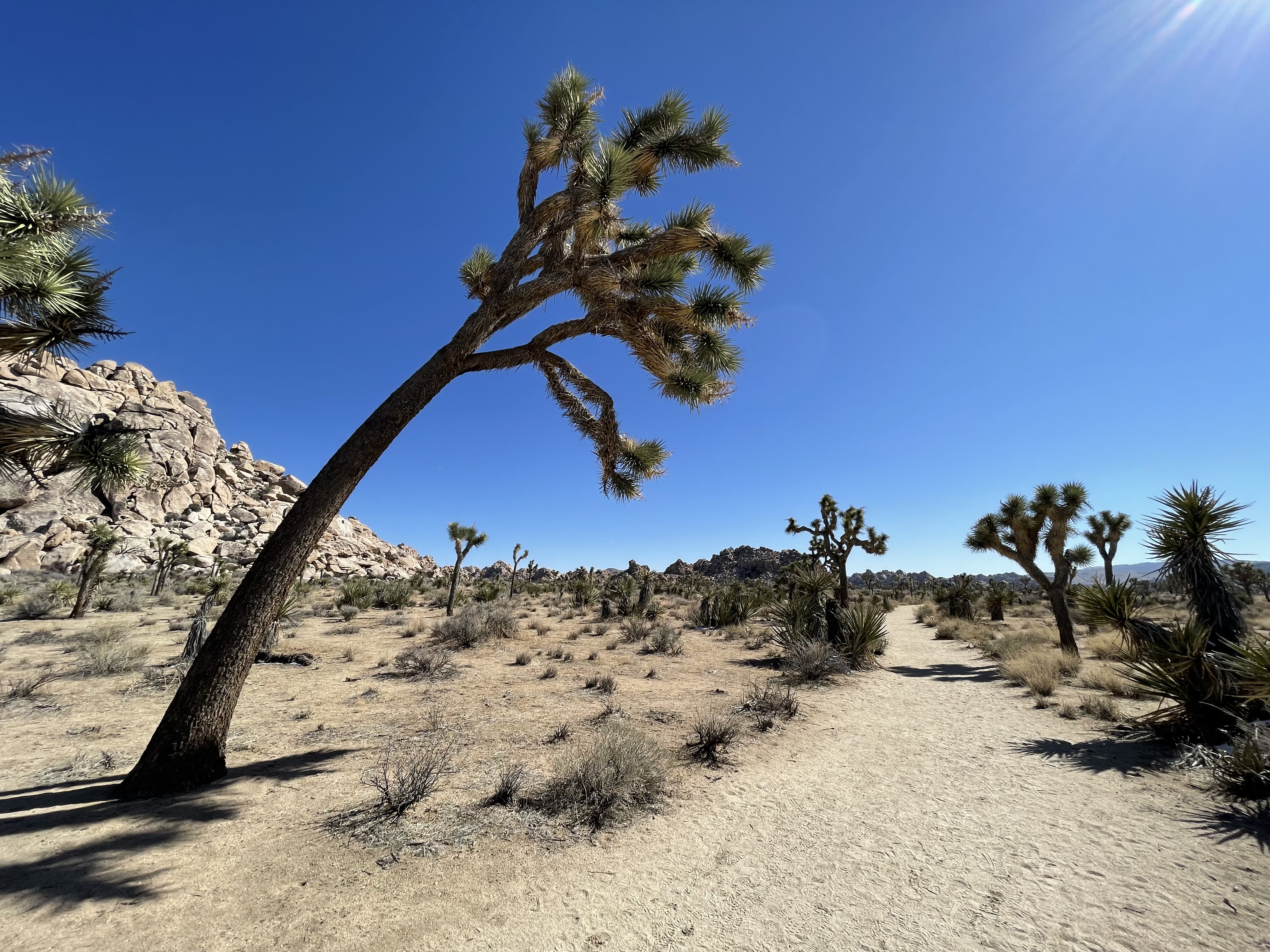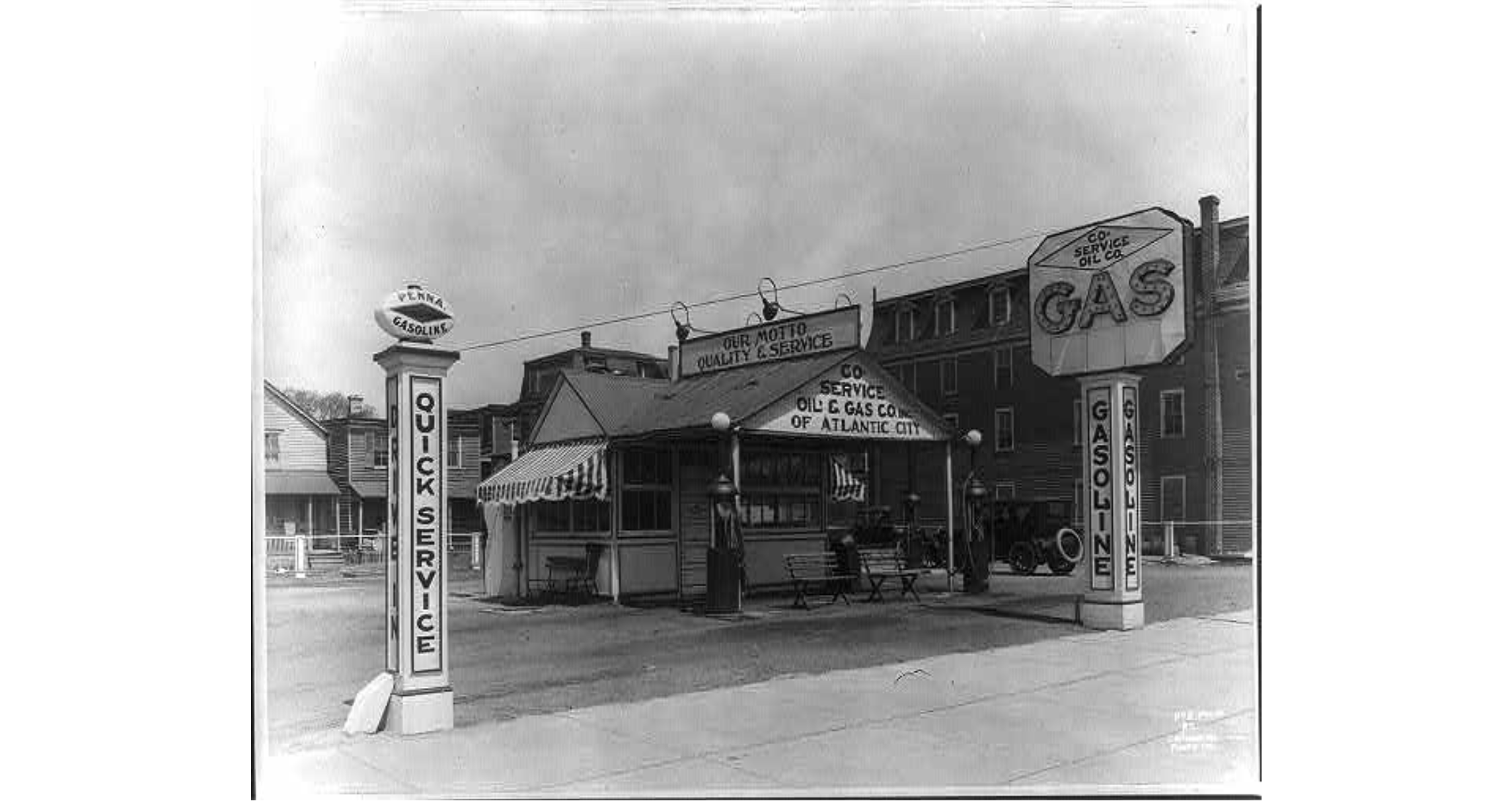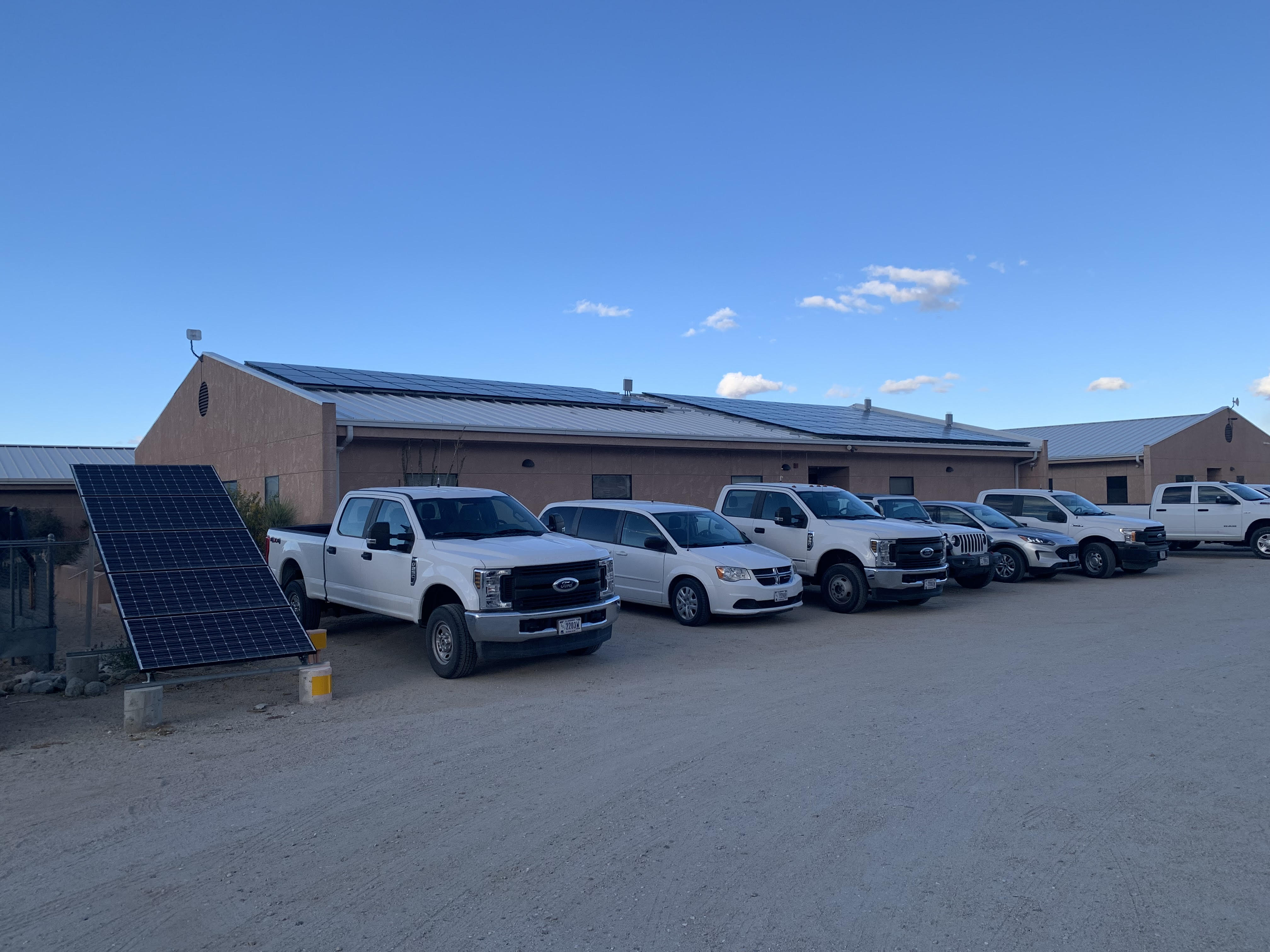March 16 – Written By Michael Sparks
Unplugged: National Park Service Struggling To Meet EV Challenges
The National Park System Is A Key Link In the Transition to Electric Vehicles. Challenges Abound.
TWENTYNINE PALMS, CA–There’s an obvious tension when visiting almost any national park: nearly every visitor uses a car, truck, or RV to get around and tailpipe emissions from those vehicles contribute directly to climate change, our parks’ most existential threat. According to a 2021 study by the American Council for an Energy-Efficient Economy, California leads the nation in the transition to electric vehicles (EVs). Joshua Tree, in southern California, is one of the country’s most popular parks. It is also a microcosm of the challenges parks face as EVs become more popular.
It is often said, sometimes by the National Park Service itself, that parks “lack the infrastructure” to handle a major transition to EVs. That’s certainly part of it. But the story is so much more complex than that.
The Suessical landscape of Joshua Tree is everything you want a national park to be: enchanting, unusual, vulnerable, protected. It also has everything it needs to transition to a renewable-energy-based economy. Namely: lots and lots of wind, sun, and open space.

On paper, that makes Joshua Tree a perfect place to utilize electric cars. (EVs only reach their true “green potential” when charged with electricity generated by renewable sources rather than, say, coal.) The U.S. Environmental Protection Agency says that roughly 30% of U.S. CO2 emissions come from the transportation sector, the lion’s share of which is tailpipe emissions. As human-caused climate change warms the planet and causes massive droughts and wildfires (in 2020, the Dome Fire killed as many as 1.3 million Joshua trees just north of the park in Mojave National Preserve), reducing tailpipe emissions is one of the biggest tools available we have to mitigate its impacts.
Tailpipe emissions from EVs are zero–they literally do not have tailpipes. But that’s not a silver bullet.
Over the lifetime of a car, an EV will be responsible for about one-half the CO2 of a typical car. Much of that comes from the production of the lithium-ion batteries on which EVs run. Those batteries are made up of raw materials that need to be mined. As outlets like The Guardian and NBC News have documented, the mining of nickel, cobalt, and lithium puts ecosystems as diverse as rainforests in the Philippines and deserts in Chile at risk.
It takes, roughly, seven metric tons of C02 to produce a standard car and closer to 10 metric tons for an EV. However, compared to the production of internal combustion engines, which has been improved upon for over a century, EV production is still in its infancy; industry analysts expect the production of EV batteries to "green up" as production–and specifically raw material mining–becomes more sophisticated.
Once the car is built, however, the most commonly cited reason for EV hesitancy among drivers, researchers, and industry analysts is “range anxiety.” For parks, this creates issues from the driveway to the visitor center.
Part of the problem is the range of EVs is nowhere close to that of gas-powered cars. A 2022 Ford F-150 (the best selling model in America) gets 600 highway miles on a single tank. Meanwhile, the 2022 Tesla Model S’s range is a mere 358.
The other part is that charging stations are too few, too slow, and too varied.
In the gateway communities around Joshua Tree, for example, there’s one Tesla supercharger station with about 15 ports and a couple other small stations. The new Joshua Tree visitor center under construction in Twentynine Palms will have a few ports as well. “It’s a bite of the apple,” Joshua Tree Superintendent David Smith explained in a recent interview with The Traveler.
The U.S. Department of Energy, which keeps the most accurate map of fueling stations across the country, says there were 53,000 charging stations and 131,000 charging ports (spots for individual cars) across the country in February 2022. Though they don’t keep track of the equivalent number of individual fuel pumps, the American Petroleum Institute says there are about 150,000 gas stations across the country. If we conservatively assume an average of four pumps per station (that’s really conservative), that’s 600,000 pumps, or more than 4.5 times the number of electric chargers.
President Biden has set an ambitious goal of constructing 500,000 individual chargers across the country by 2030. Importantly, a major focus of the National Electric Vehicle Infrastructure Formula Program (NEVI) is to strategically locate charging stations along “designed Alternative Fuel Corridors, particularly along the Interstate Highway System,” a Federal Highway Administration spokesperson said. The program is just getting off the ground, though, and it’s too early to tell how successful it will be.
For the sake of the parks, it needs to be successful.
“One of our biggest challenges comes with infrastructure in the park for charging stations,” Smith said. “It’s no problem to come up from Palm Springs for the day,” he explained, pointing it out on the map in his office, but visitors need to make sure they start with a full charge if coming from the more remote side of the park.
Senior Manager of Resilience and Sustainability at The National Park Foundation Ashley McEvoy expanded on what makes building charging infrastructure at parks so complicated: “The biggest challenges relate to what makes national parks so special in the first place–how different they can be. Each park has its own specific needs, and…Many parks are in remote locations and power supply can be a challenge.”
If you are lucky enough to find a station on your way to a park, hopefully you’re also lucky enough to find a connector that fits your car. Unlike with gas stations–where any given pump can fit in any given car–electric charging stations have a variety of connectors.

Tesla–which accounts for at least two-thirds of the American electric car market in the last couple of years–connectors don’t work with chargers for the other third of the market. (Tesla did recently launch a pilot allowing non-Tesla vehicles to use their chargers–in the Netherlands.)
Another stark contrast with gas stations is the fact that electric charging stations often have different billing systems. Sometimes you pay for the time spent charging; sometimes the amount of electricity consumed, measured in kilowatt-hours.
There is clearly no shortage of challenges that electric vehicles pose for visitors traveling to national parks. Still, there are glimmers of hope. The ubiquity of gas stations belies their underlying complexity. Over 150,000 well-functioning gas stations did not materialize out of thin air, fully formed. According to the Association For Convenience & Fuel Retailing, at the first filling stations a shopkeeper would fill a five-gallon bucket out back and bring it around to the customer’s car to fill it.
Ken Gillingham, Professor of Environmental & Energy Economics at the Yale School of the Environment told The Traveler, the EV market “is relatively new, so I anticipate we’ll see different business models for some time to come that will eventually land on more of a standard.”

As part of the NEVI program, a spokesperson for the Federal Highway Administration explained that “minimum standards and requirements are forthcoming” but was unable to offer further details, as they don’t yet exist.
Dr. Gillingham thinks that’s an imperative. “I strongly support a single standard for all vehicles that allows all vehicles to charge at any charging station.”
Though ranges are still short, they are improving fast. The median range of electric cars in 2020 was more than double the median range in 2018. In 2019, At Delaware Water Gap National Recreation Area, BMW and the National Park Foundation teamed up to donate a new charging station to the park, which runs through New Jersey and Pennsylvania, quite close to both Philadelphia and New York. Delaware Water Gap Public Information Officer Kathleen Sandt told The Traveler that the park doesn’t need to add any new stations because ranges have increased so much.
“There is no need for additional charging stations in the park. Ranges of electric vehicles have increased in the last few years and are now sufficient so that there is no chance of a vehicle running out of battery” while driving through the park, she explained.
Reducing emissions from visitors is, of course, the biggest benefit of EVs. But park operations also matter, and EVs pose a different set of challenges on that front.
Joshua Tree currently has about 62 “fleet vehicles,” only one of which is electric (and it was donated by the National Park Foundation). But, the park has a goal to “convert every vehicle we can” to electric by 2030. “We can” is an important caveat–the technology just isn’t there yet for electric vehicles to do everything the park could need, particularly around emergency response.
“It’s mostly a range thing and a little bit of a 4-wheel drive and clearance thing. The vehicles that are out there right now don’t seem to have that, which we really need in some of these sandy areas,” Eric Linaris, Joshua Tree’s chief ranger, explained.
Likewise, at Delaware Gap, only 2% of the fleet is electric, in part because “while there has been an increase in electric vehicle offerings, the available vehicles do not necessarily meet the park’s mission requirements and needs,” Sandt explained.
So, electric vehicles offer a huge amount of promise for parks but, like for the rest of the country, the gap between reality and potential is Grand Canyon size. What should the Park Service–what can the Park Service do–to help accelerate the electric vehicle transition?
Sitting in his office, Smith laid out how he sees it for Joshua Tree. “We are not the 3.1 million people who visit every year,” he said. “We’re a staff of about 120” and that’s all we have the capacity to handle. “We’re very good at stretching a dollar.” Joshua Tree’s role, he continued, is to “set the tone” for the public. “We have the capacity to be net-zero” in the next couple of years and that’s an important example for the public. “They know we’re trying to walk-the-talk.”

Superintendent Smith can only speak for Joshua Tree, however, so The Traveler reached out to Shawn Norton, the program manager for sustainable operations Park Service-wide. When asked if the Park Service sees itself in an EV-transition leadership role, he responded in an emailed statement: “NPS recognizes the importance of reducing greenhouse gas emissions and strives to utilize efficient and alternative transportation operations in as many parks as possible.”
The climate crisis is the definition of an “all hands on deck” problem, and several other entities are working on projects that may benefit America’s national parks.
Clean Cities is a public-private partnership overseen by the Department of Energy. Individual partners, like Northern Colorado Clean Cities, work within their communities to implement alternative fuel technologies.
The Executive Director of Northern Colorado Clean Cities (NCCC) Diego Lopez said his group has been working with Rocky Mountain National Park for years to install stations in and around the park, as well as providing the park with multiple electric fleet vehicles. Still, the park only has a handful of charging stations because of its remoteness and the fact that the “cost of electricity in rural areas is higher than urban areas,” Lopez said, as is the “cost to transport the materials” for station construction. One way NCCC has been working around this problem is by helping gateway communities, like Estes Park, Colorado, build out more of its EV infrastructure.
But a few electric trolleys are a drop in the bucket of what’s needed. Perhaps the most common refrain among people The Traveler spoke to–from scientists to land managers to utility companies to nonprofits and the U.S. Department of Transportation–was “we can’t do this alone.”
That’s why major utilities, like California’s Pacific Gas & Electric, have to step in and help build out more remote sustainable infrastructure.
PG&E’s “EV Charge Parks” program, which is still being developed according to spokesperson Paul Doherty, aims to build more than 40 charging ports in over 15 state parks and beaches across the state. There are 280 state parks in California.
Though it’s a mouthful, PG&E’s “Community Microgrid Enablement Program” might have more long-term potential for EV charging. Microgrids are self-sustaining power grids that run on renewable energy, like solar. They can be built almost anywhere and have the added benefit of allowing the utility to avoid costly and dangerous overhead power lines which, especially in California, have caused tremendously destructive wildfires.
The program will need to be watched closely: it is less than a year old, zero community microgrids have been built so far (several are in the planning stages), and PG&E will spend less than $30 million on the program this year (the California Public Utilities Commission, which regulates privately owned utilities in the state, is providing an additional $200 million among PG&E and other electricity providers). PG&E’s total 2021 revenuea was almost $21 billion.
The idea of independent microgrids seems to fit perfectly with the Park Service’s needs, especially at a remote place like Joshua Tree. Why not use already disturbed land–like parking lots–and build sun shades (as solar panels on parking lots are often called) that act as EV chargers?
Dr. Gillingham, from Yale, says the idea could work in some parks but not everywhere. “I think that approach would be expensive relative to just bringing out more capacity and further lines (at least at today’s costs), but very possible, at least for some parks.”
Joshua Tree recently acquired several hundred solar panels and “I’ve challenged our building foreman to look at our parking lots and see if shade structures are feasible and if that’s something we can support,” Smith said. “You get the benefit of cooling off cars and using an already disturbed area.”
The challenge of using many small, distributed areas like parking lots is that “power is designed to flow from big power plants down to our houses,” as Destinie Nock, assistant professor of engineering and public policy at Carnegie Mellon, explained to CNBC last January. “That one way direction has really limited our transition to more renewables and their storage.”
Because of that limitation, it may be the case that one of the best ways to save Joshua Tree National Park is to kill Joshua trees, depending on who you ask. A fight has been brewing for years just outside the boundaries of the park as developers seek to build massive solar farms that can generate enough power for entire cities. But doing so requires, euphemistically, “displacing” Joshuas and disrupting the desert ecosystem.
In fact, the Biden administration just approved two massive solar projects on Bureau of Land Management land in nearby Riverside County. And a few years ago a major fight played out over the Palen Solar Project, which would power nearly 20,000 homes but also displace Joshua trees and endanger many of the plants and animals that live in the Mojave Desert.

At the time, Brendan Cummings, conservation director for the Center for Biological Diversity, told the L.A. Times that “If you have to mow down hundreds, perhaps thousands, of climate-threatened trees, and disturb carbon-sequestering soils, to build your climate-friendly project—that’s a pretty good indication you’ve put it in the wrong place.”
"The desert is now plowed up, and the habitats have been destroyed, the ecosystems have been destroyed," Patricia Robles, chair of the Lacuna de Aztlan Sacred Sites Protection Circle, a Native American group, argued during a hearing at Palm Springs City Hall in 2016. "The desert bioregion is a very important region to the world and it is very hard to restore. You will never see the desert the way it was prior to the destruction."
But given the existential scale of the climate crisis, others urge speed, even if that means surrendering part of the desert. “We’ll Have to Sacrifice Joshua Trees to Save Them” was the headline of an October essay in the L.A. Times, written by two biologists and an ecologist.
The Department of Energy, for its part, recommends erecting solar panels in both cities and rural areas.
Of these projects, Smith explained, “Whenever there’s energy development on the edges of the park, we’re very involved…We’re commenting to make sure any environmental issues are mitigated.”
Asked if the desert habitat of Joshua trees was an appropriate place to build massive solar farms, Smith offered a nuanced take: “Anything we can do to reduce the amount of carbon emitted, we’re generally supportive of, but we also acknowledge there’s an appropriate place for energy development and there are some places that are inappropriate.”
Such as?
“Inside of a national park. To create a large solar array in a place that is so meaningful to the American public is not appropriate…but given how big California is and our demand for energy, there are places that are appropriate.”
There is no obviously correct answer for how to support EVs in parks. The climate crisis is a complex problem that requires complex solutions. As Smith–who drives a Tesla himself–mused, “These are some super big challenges. Given the prospect of climate change destroying Joshua Tree and other national parks, land managers and all of us are going to have to decide: there are going to be some sacrifices, is this an appropriate sacrifice?”
This article was originally published on National Parks Traveler